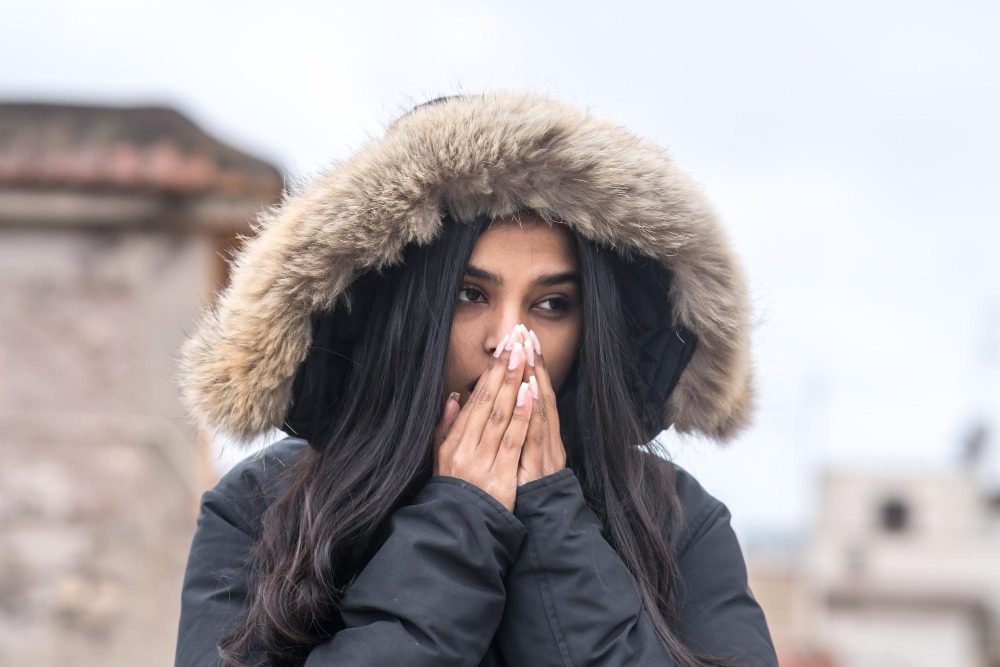Cold air can be triggering for the airways- it can lead to inflammation and excessive mucus production- which can lead to symptoms we commonly associate with asthma- breathlessness, wheezing, heaviness of the chest, inability to take a full breath, etc. The airways need to be moist to work well and prevent infection. This is helped by high to normal humidity levels but when someone breathes in dry, cold air- their airways can get dry, leading to an increase in infections. Dust particles and dry air can mean less moisture, which means they will not be trapped effectively for removal by the immune system.
Top Reasons For Worse Than Usual Asthma In Winter
Let us look at the top reasons for breathing issues getting worse in the winter and people having problems with asthma-
● Low humidity at home- Using artificial heating systems can mean that the air circulating at home is more dryer than usual- so, make sure to use a humidifier- this will help you breathe easier. It will also keep your skin feeling better, so it does not get too dry.
● Severe air pollution can cause the formation of thick smog- which can be hard to breathe in. You can see this by looking at the Air Quality Index on your phone or in the weather app. If the value is high, then air quality is poor due to greater amounts of particulate matter.
● There is more dust at home- and if you have pets at home, then add dander to the list. This can be highly triggering for particularly sensitive individuals.
● Cold and very dry air, as mentioned before, is bad too. It can dry out the air passages and cause inflammation.
● Winter is the season for flu and seasonal colds. So, getting vaccinated every year can greatly help reduce your risks of getting infected.
How To Stay Safe And Breathe Free This Winter-
Now that we have looked at the top causes for breathing issues, let us look at solutions to follow- to get better-
● You should always dress in layers- so you stay warm. This means your body won’t lose too much energy trying to keep you warm and instead divert those resources to keep you safe with the immune system.
● You should try to exercise every day - this can help improve blood circulation and heart pumping capacity. But, if you have exercise-induced asthma, then you should be careful and see about modifying exercises. You will also breathe better. But, try to work out indoors and not out in the bitter cold.
● You should try not to get exposed to smoke, dust, mites, strong odors, etc.- all of which can be asthma triggers.
● You should always be prepared with an inhaler- wherever you go. This can provide instant relief if you get exposed to any triggers unexpectedly. Using your inhaler before going out is also a good preventive measure.
● Wear a mask and scarf to keep your neck and nose warm. Dress well and cover your hands and feet too.
● You can drink warm water or sip on hot drinks throughout the day. Try not to keep the windows open at night as that is when temperatures can drop drastically.
● Steam therapy is good for you.
● Eating hot meals every day is important- it can warm you up and you will feel better.
● If there is too much moisture in your house, it can lead to mold growth, and inhaling these spores can be bad for some people.
● You should talk to a doctor when you notice that your symptoms have gotten much worse than before.
Conclusion- Paying attention to what you eat can help a lot this season - adding garlic, ginger, tulsi, pepper, honey, cloves, cinnamon, turmeric, and other common Indian kitchen staples can greatly help relieve symptoms. You can have warm drinks like teas or tisanes- by boiling some tulsi leaves in water, or jeera in water, or even green tea- this can soothe your throat and also help you breathe easier. Continuing with breathing exercises is always a good idea and not just in the winter. You can also inhale steam for better results. What else do you do when you are dealing with an asthma attack? Let us know below!
FAQs-
1) What are the reasons for worse asthma in winter?
Poor air quality, dry and cold air, increase in rates of infection - are all significant triggers for asthmatic individuals in the winter.
2) What are the measures that you can take to get better?
You can use an inhaler to be safe, keep your house and surroundings as clean as possible, wear a mask when cleaning and going out, and use a humidifier at home. You should also include steam therapy every day, along with breathing exercises.
3) How can I protect myself from pollution this season?
You can dress warm and avoid exposure to certain triggers by looking at past instances or attacks.
4) Are there any warning signs before an asthma attack?
Yes, you may feel short of breath have a heavy chest, or have a wheezy sound when you breathe in and out if these are present, then you may have an attack soon and so, it is better to be prepared always.
5) What is an asthma action plan?
Your doctor would have given you medication- so take that regularly. Don’t skip it. Use an inhaler when needed. Talk to your family and friends about it so they know how to help you when you are having an attack and cannot speak clearly. Also, get checked regularly, so your progress can be assessed.




